Sir Thomas Deane
architect; b. 1792; d. September 2, 1871.
Deane was the son of a builder of Cork (Ireland). He made a fortune in his father's business, became mayor of Cork, and was knighted in 1830. He then commensed practice as an architect and built at Cork the Bank of Ireland, the Savings Bank, the Queen's College, the portico of the Courthouse, etc. With his son Thomas Deane be built the Museum at Oxford (England).
Professor Thomas Leverton Donaldson
architect; b. October 17, 1795; d. August 1, 1885.
At the age of sixteen he entered his father's office, and in 1817 won the silver medal at the Royal Academy. In 1818 he began a tour in Italy and Greece, some of the results of which were published in the supplementary volume of Stuart and Revett's Antiquities of Athens in 1830. A list of his buildings is given by Gruning. For about ten years after 1835 he held the office of Chairman of the Commissioners of Sewers of Westminster and a part of Middlesex. He was professor of architecture and construction at University College, London. He was a member of the building committee of the exhibition of 1851, held numerous foreign honors, and was member of many societies. Professor Donaldson was a supporter of the Arch. Pub. Soc. Dictionary, and contributed much to the earlier volume.
Léon Emmanuel Simon Joseph, Marquis de Laborde
archaeologist and art historian; b. June 13, 1807 (at Paris); d. March 26, 1869.
A son of the Count Alexandre Louis Joseph de Laborde. He was educated in Göttingen, Germany, and travelled in Asia Minor, Syria, Egypt, and Arabia Petraea. He was secretary of the French embassy in Rome under Chateaubriand, was made conservateur of the Musée des antiquités du Louvre in 1831, and later directeur général of the archives of the empire and member of the Académie des inscriptions et belles lettres (1842). He published Voyage de l'Arabie Pétrée (1830-1833, folio); Les ducs de Bourgogne (1849- 1851, 3 vols. 8vo); La Renaissance des Arts à la cour de France (1850-1855, 8vo); Athènes aux XV, XVI et XVII siècles (1855, 2 vols., 8vo); Le Parthenon (1847 ff., unfinished); Voyage en Orient, Asie Mineure, et Syrie (1837-1862, 2 vols, folio); Glossaire Français du moyen âge (1872, 8vo); Les Archives de la France pendant la Revolution (Paris, I860, folio); Les Comptes des bâtiments du roi (1878-1880, 2 vols. 8vo).
John Pennethorne
architect; b. January 4, 1808; d. January 20, 1888.
A younger brother of Sir James Pennethorne. In 1830 he made a journey through Europe to Egypt. He was the first to observe the curvature and optical refinements of the Parthenon; and he also observed the curvatures of the temple of Medinet Haboo in Egypt. In 1844 he published privately a pamphlet entitled The Elements and Mathematical Principles of the Greek Architects and Artists, in which he set forth a theory of optical corrections. Mr. F. C. Penrose continued these investigations in 1846, and published his Principles of Athenian Architecture in 1851 (1 vol. folio). Pennethorne's great work on The Geometry and Optics of Ancient Architecture was not published until 1878. He published also a paper in the Transactions of the Royal Institute of British Architects (1878- 1879) on The Connection between Ancient Art and the Ancient Geometry.
Edward Schaubert
architect; b. 1800.
He studied in Breslau and Berlin, and in 1830 went to Greece, where he held several public offices. He was associated with Ludwig Ross and Christian Hansen in the restoration of the temple of Nike Apteros on the Acropolis and in the publication of Die Acropolis von Athen . . . der Temple der Nike Apteros (1839, 1 vol. folio).
Schinkel's Berlin
2121
| |
In 1830 Semper visits southern Italy, Sicily, and Greece, studying the use of colour in architecture.
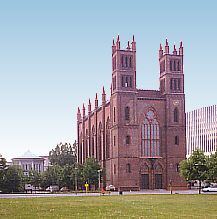 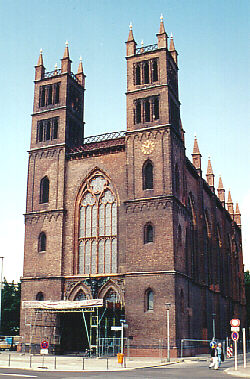
Karl Friedrich Schinkel, Friedrich Werdersche Kirche (Berlin: 1821-1830), pp.SAE, SAE.

Friedrich Wilhelm IV, Gardener's Villa in Sanssousi (c. 1830).
| |
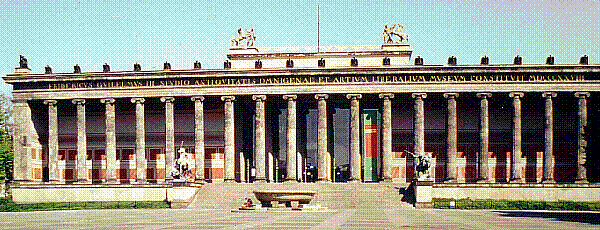 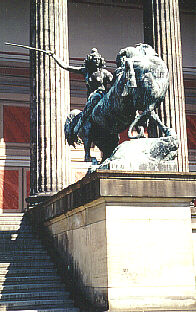 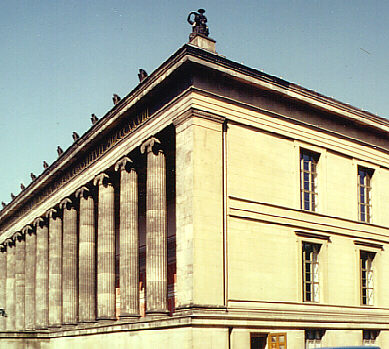
Karl Friedrich Schinkel, Altes Museum (Berlin: 1822-1830), pp.SAE SAE.
2120
|